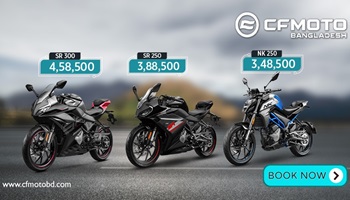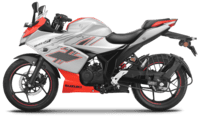What is an ECU in a Motorcycle?
What is an ECU in a Motorcycle? ECU is the acronym for Engine Control Unit. The motorcycle ECU can be also abbreviated as ECM. Oh, ECM stands for Engine Control Module. The engine is labeled as the heart of the motorcycle. Meanwhile, bike specialists have termed ECU as the brain of modern bikes. Is ECU also called brain box? Yes. Why is ECU called the brain of the bike? As our brain detects smell, sight, & sound and then responds through different organs; the ECU also acts in the similar way.
What does an ECU do on a Motorcycle?
What is the role of ECU in a bike? The alluded device is indeed the core element for the engine management systems of the bikes. In other words, it is an electronic device controlled by the microprocessor. The manufacturers have designed it to control the unit and its related issues. It features special software that processes the system information. Various functions are managed by it. For instance: air management, exhaust gas treatment, fuel injection, fuel supply, ignition, etc. Its primary task is to operate the engine. It tends to make sure that the engine provides optimum performance along with optimum efficiency. It also oversees the regulatory activities of the engine.
How Does a Motorcycle ECU Work?
As we’ve already revealed, they call ECU the brain of automobiles. Many actions take place in the engine. The Engine Control Unit combines all of those to accomplish smooth ignition. As a rider operates his bike, the ECU has the responsibility to monitor various factors. It assesses the environment and the condition and determines the best possible way for the bike engine to function. The mentioned device detects the requirements concerning the engine operation. It takes into consideration both the exhaust system’s demands as well as the rider’s demands.
Bike assistance systems such as motorcycle stability control (MSC) get allowance through this device so that it can intervene with the engine torque. The torque plays a key role and gets efficiency through the adjustment of the air-fuel ratio. The ECU is also capable of assisting the function of modern devices & functions like board diagnosis, functional safety (ISO 26262), knock control, start/stop, etc.
Do All Motorcycles have an ECU?
It’s an interesting query. Indeed, every motorcycle doesn’t have an ECU! Generally, the regular bikes that come with low capacity or provide low performance, don’t have an ECU. For example, commuter bikes or cafe racers. In other words, the bikes that function through an air-cooling system don’t generally have an ECU. You can notice this device on high-performance motorcycles.
What is the Purpose of an ECU?
You’ve already come to know about the role of the ECU on bikes. Now let’s find out the key advantages the ECU provides to the 2-wheelers.
- Ensures powerful and efficient riding and overall high performance of the automobiles.
- Guarantees improved handling and a perfect calibration.
- Smoother as well as responsive throttle response.
- Fuel efficiency and optimized use of the engine oil.
- Features a simple software structure but an adaptable hardware structure.
- Even during a cold start, there is no need for a manual choke operation.
- Properly controlled Air-fuel mixing ratio.
- Environmentally friendly as it fulfills the emissions regulations. Maintains the regulation standards like Euro 5 or BS6.
- A well-controlled operating temperature.
- Almost no to a limited engine knocking issues.
What are the Limitations of an ECU?
This modern inclusion has helped the bikes to achieve top performance in several ways. However, there are some crucial lacking one may experience. The cons of the Electronic Control Unit of the bike include:
- You might have already understood that it’s pretty much an expensive device and technology. Thus, it increases the cost of the motorcycle that features this device. And that’s why this device is not currently suitable for low-budget bikes like commuters.
- A non-fruitful repair work as well as tempering.
- There is still no way to modify or customize this device. Authorized after-market-ECUs are so far the lone solution for such scenarios. However, in the near future, there might be some easier solutions but still, we don’t have those options.
- Also, no way to separately operate the different tasks. Works following the pre-programmed presets or instructions.
What are the Symptoms of a Bad ECU?
A bad ECU will be indicated through different signals. Those include:
- Riders will face a decrease in engine power and acceleration.
- Poor fuel efficiency is another crucial indicator. Your bike will charge more fuel for less distance relative to a normal situation.
- The engine will not start easily. Stalling will be there.
- Inconsistent shifts or erratic shifting patterns.
- There might be some ignition problems. Apart from difficulty to start, you may notice some misfires created by your vehicle ignition system.
- Another important notifier might be the illumination of the Check Engine Light on the automotive’s dashboard.
How to know if a motorcycle ECU is bad?
The above-mentioned symptoms will let you consider that your motorcycle ECU has gone bad. Apart from checking out those symptoms, you may also check out the power supply, ground connection, communication line, memory & software, hardware components, as well as some other factors to be sure that the ECU is not working properly.
Can Bike ECU be Repaired?
Depends upon the problem that is there. However, in most cases, it’s money-worthy to get a new ECU rather than repairing the one with a serious issue. What causes an ECU to fail? Voltage spikes, moisture ingress, component degradation over time, etc can cause an ECU to fail.























